#Russian Avant Garde
Explore tagged Tumblr posts
Text
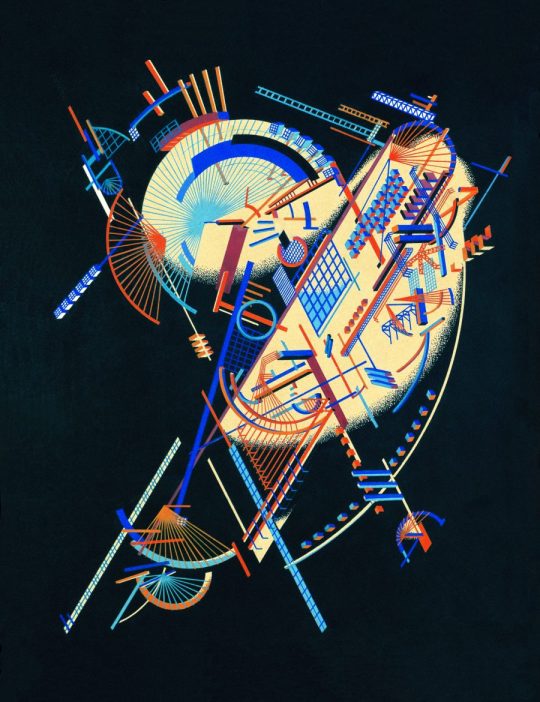
Yakov Chernikhov (1889-1951) — Architectural Fantasies № 95 [Leningrad, 1929-1932]
1K notes
·
View notes
Text
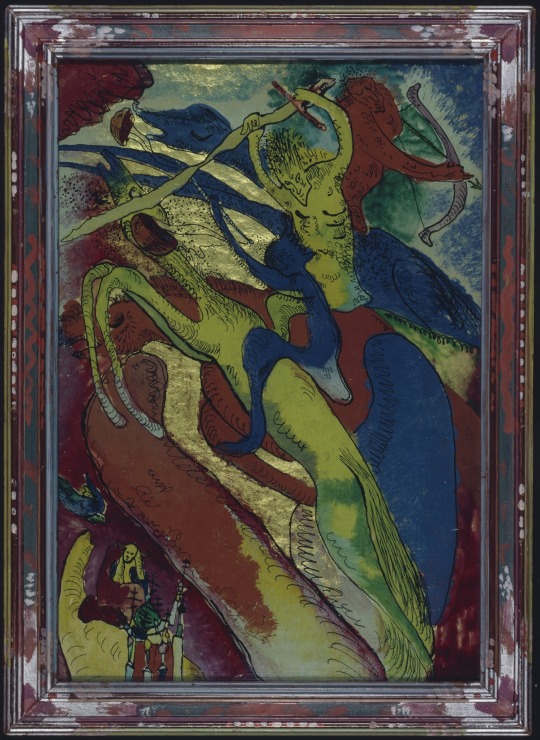
Wassily Kandinsky
Apocalyptic Horseman
1911
#wassily kandinsky#religious art#religious painting#der blaue reiter#russian artist#russian avant garde#russian painter#abstraction#abstract#abstract painting#abstract painter#abstract art#modern art#art history#aesthetictumblr#tumblraesthetic#tumblrpic#tumblrpictures#tumblr art#aesthetic#beauty
773 notes
·
View notes
Text

Natalia Goncharova (Russian, 1881-1962) • Self-Portrait with Yellow Lilies • 1907-1908
#art#art history#self portrait#painting#oil painting#natalia goncharova#woman artist#russian artist#russian modernism#avant garde art#russian avant garde#early 20th century russian art#artist as subject#the canvas mirror art blog#art blogs on tumblr#art lovers on tumblr
45 notes
·
View notes
Text

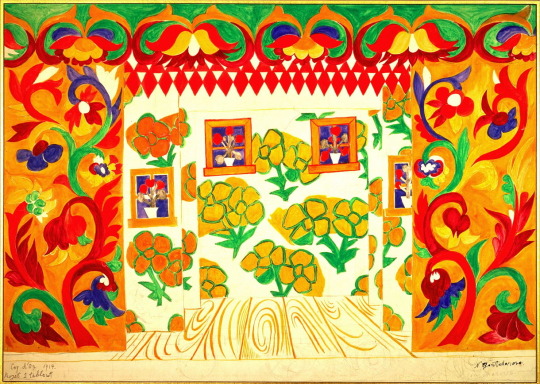




Natalia Goncharova set designs for the Ballet Russe
110 notes
·
View notes
Text
An ‘Ism’ Overview - Futurism vs. Russian Avant-Garde
In the early twentieth century, two art movements emerged that would have a profound impact on the course of modern art: Futurism and Russian Avant Garde. Both movements rejected traditional artistic conventions and embraced the avant-garde, seeking to break with the past and create a new art for the modern age. While there are some similarities between these two movements, there are also significant differences that set them apart.
Futurism emerged in Italy in 1909 with the publication of the Futurist Manifesto by Filippo Tommaso Marinetti. The Futurists celebrated speed, technology, and the machine age, rejecting the past in favour of a new, dynamic future. They sought to capture the energy and movement of the modern world in their art, using bold colours and dynamic compositions to express the excitement of modern life. Russian Avant Garde, on the other hand, emerged in Russia in the early 1910s, with artists like Kazimir Malevich and Wassily Kandinsky leading the way. Like the Futurists, they sought to break with the past and embrace the avant-garde, but their focus was on abstraction and the spiritual nature of art.
One of the key similarities between Futurism and Russian Avant Garde is their rejection of traditional artistic conventions. Both movements saw themselves as radical departures from the past, seeking to create a new art for the modern age. They rejected the academic traditions of the past, seeking to free themselves from the constraints of realism and naturalism. Both movements also celebrated the avant-garde, seeing themselves as part of a broader movement of artists seeking to push the boundaries of art.
However, there are also significant differences between these two movements. The Futurists were primarily concerned with capturing the energy and movement of the modern world, using bold colours and dynamic compositions to express the excitement of modern life. They were inspired by the speed and dynamism of the machine age, and sought to capture these qualities in their art. By contrast, the Russian Avant Garde artists were more interested in the spiritual and abstract nature of art. They saw art as a means of expressing the innermost thoughts and emotions of the artist, and sought to create works that were purely abstract and devoid of any representational content.
Another key difference between these two movements is their use of colour. The Futurists were known for their bold, bright colours, which they used to express the energy and dynamism of the modern world. They often used complementary colours and bold contrasts to create a sense of movement and excitement in their art. The Russian Avant Garde artists, on the other hand, tended to use more subdued colours, often relying on shades of gray and muted tones to create a sense of depth and emotion in their works.
In conclusion, while there are some similarities between Futurism and Russian Avant Garde, there are also significant differences that set them apart. Both movements rejected traditional artistic conventions and celebrated the avant-garde, but the Futurists were primarily concerned with capturing the energy and movement of the modern world, while the Russian Avant Garde artists were more interested in the spiritual and abstract nature of art. Additionally, the Futurists used bold, bright colours, while the Russian Avant Garde artists tended to use more subdued tones. Despite these differences, both movements had a profound impact on the course of modern art, inspiring generations of artists to come.
#art#artwork#learning#teaching#art education#art history#art critique#art movements#futurism#russian avant garde
5 notes
·
View notes
Text

Olga Rozanova
#Olga Rozanova#art#graphic#suprematism#avant garde#russian avant garde#abstract#geometric#abstract art#geometric abstraction
41 notes
·
View notes
Text

Composition without a subject - Lyubov Popova, 1921.
30 notes
·
View notes
Text
O efeito de El Lissitzky
Minha relação com a série Proun
Escrito em 14/04/2023
O artista constrói um novo mundo com seu pincel. Este símbolo não é uma forma reconhecível de algo que já está acabado, já feito, já existente no mundo – é um símbolo do novo mundo, que está sendo construído e que existe por meio das pessoas. El Lissitzky
Não há outro jeito de começar esse blog senão com o meu artista preferido: El Lissitzky. Objeto de minha admiração constante no meu tumblr oficial , o universo criado em seus quadros é o que me faz querer seguir no caminho da arte, e reproduzir aquela sensação é o meu objetivo final na arquitetura.
Desde que entrei em contato com sua obra eu não consigo separar meu entendimento do que é arte da minha experiência com a série Proun. O universo geométrico criado nos quadros, mesmo com as limitações da tela e com a simplicidade das figuras, obriga o expectador a expandi-lo na mente e mesmo ao desviar a vista suas formas acompanham a realidade.

Proun 4 B, 1920
Os quadros feitos nos anos de 1919 a 1927, culminando no Prounenraum (Quarto Proun) de 1923 são distintos do movimento suprematista o qual Lissitzky fazia parte: o efeito espacial já presente na obra de Malevich tem seu efeito aprofundado pela tridimensionalidade. A atemporalidade da série é facilitada por não parecem com nada feito em seu período, sem contar com a técnica, cujo o fato de ter sido feitas manualmente surpreende em nossa época de arte digital.
Suas obras tem o efeito de fetiche sobre o espectador de todas as épocas: o modo de sua produção, seu contexto e autor são pouco relevantes para sua admiração. Creio que esse conceito seja ainda mais valioso do que nunca na contemporaneidade.
Por fim, El Lissitzky me fascina pela capacidade que teve de trabalhar suas ideias em diversas escalas, desde a mais experimental esquematização/pintura da Proun aos seus famosos cartazes de AGITPROP (“Vença os Brancos com a Cunha Vermelha” é sem dúvidas sua obra mais conhecida). Sua obra se estende por vários campos e sua influência em seu período é subestimada até hoje, espero que com esse blog possa dar mais luz a esse grande artista.
#russian avant garde#lazar khidekel#constructivism#malevich#arte#crítica#blogger#art#escritos#el lissitzky
4 notes
·
View notes
Text
Malevich is the GOAT
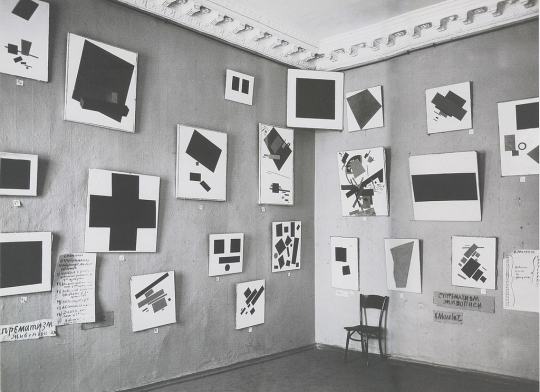
Seriously look this guy up I love him
3 notes
·
View notes
Text

Unattributed. Unsigned. In the style of Lyubov Popova. Text in Russian, lower right front corner, translates to “Sketch”. Oil on Canvas. 60.5 x 40 cm
c.1910-1925. Banned by Stalin c. 1939
from Art of the Zero Category
0 notes
Text

Yakov Chernikhov (1889-1951) — Suprematist Composition [gouache and ink, on paperboard, 1922]
704 notes
·
View notes
Text
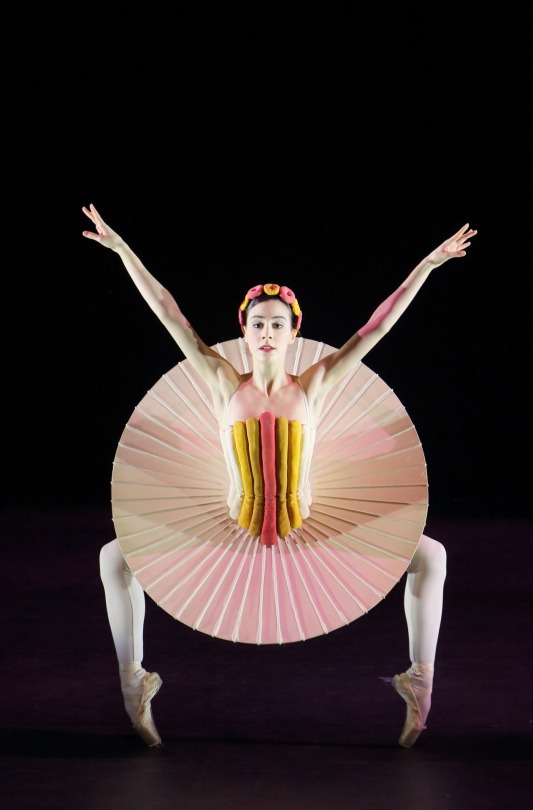



Oskar Schlemmer
Costume Design, Triadisches Ballett (Triadic Ballet)
1921-1929
(New Production, 2014, color photos: Wilfried Hösl)
#oskar schlemmer#ballet#costume#costume design#russian avant garde#bauhaus#german art#german artist#avant garde#ballet costumes#clothing design#modern art#art history#aesthetictumblr#tumblraesthetic#tumblrpic#tumblrpictures#tumblr art#aesthetic#beauty#ballet dancer
191 notes
·
View notes
Text

Kuzma Petrov-Vodkin (Rusian/Soviet, 1878–1939) • Self-Portrait • 1903
#art#art history#self portrait#painting#kuzma petrov-vodkin#russian/soviet artist#early 20th century russian art#russian avant garde#oil painting#artist as subject#art lovers on tumblr#the canvas mirror art blog#artwork#art blogs on tumblr
42 notes
·
View notes
Note
How did you become interested in Russian? Are you studying Russian literature? :o
I did study Russian literature and history!! 💖 I actually first fell in love with the Russian language and culture when I watched the Sochi Olympics opening ceremony on TV in 2014. There was this skit about the Cyrillic alphabet with references to aspects of Russian history and culture, and I was enthralled. Genuinely life-changing... I'm so proud to say that I recognize all of the references in that skit now, and have spent considerable time with these highlights of Russian culture throughout my university years.
I started studying Russian with a private teacher in 2016, after having gotten to a high enough level of French fluency that I felt ready to start another language. A few years later, when it came time for my first year of university, I tested into the advanced Russian class! As a Russian/East European Studies major, I discovered the Russian avant-garde and Mayakovsky's poetry, researched the reality and myths behind the "happy Soviet childhood," and fell in love with Soviet space history and cosmonauts.
I eventually wrote my honors thesis about the friendships between cosmonauts and astronauts that developed out of their first meeting in 1967 at the Paris Air Show. It was these initial interactions that helped pave the way for the Apollo-Soyuz Test Project – the first joint mission between Soviet cosmonauts and American astronauts. The astronauts and cosmonauts both pushed for greater collaboration, affecting Cold War space policy from the bottom up.
#my interest in russian culture does NOT mean I condone the treatment of minorities and political dissidents by the Soviet state#and I am vehemently opposed to Russian imperialism and the war in Ukraine#russia#soviet union#ussr#russian culture#cosmonaut#космонавт#space exploration#mayakovsky#маяковский#avant garde#russian avant garde#avantgarde#russian avantgarde#constructivism#futurism#je réponds#stuffedeggplants
1 note
·
View note
Text
An ‘Ism’ Overview - Russian Avant-Garde vs. Suprematism
The Russian Avant-Garde and Suprematism were two artistic movements that emerged during the tumultuous early decades of the 20th century. Both movements sought to break with traditional artistic forms and create a new language of expression that reflected the rapid social and political changes of the time. While there are similarities between these two movements, there are also distinct differences that highlight the unique qualities of each.
Russian Avant-Garde emerged in the early 1900s as a response to the political and cultural upheavals of the time. Artists sought to break with traditional forms of art and create a new visual language that would express the changing realities of their world. The Russian Avant-Garde was characterized by a range of styles, from the fragmented and dynamic forms of Futurism to the more organic and fluid styles of Constructivism.
Suprematism, on the other hand, was a movement that emerged later in the 1910s and was closely associated with the artist Kazimir Malevich. Suprematism was characterized by a focus on pure geometric forms, such as squares and circles, and a rejection of representational art. Malevich saw Suprematism as a way to create a new form of art that would transcend the limitations of traditional painting and create a new visual language for the modern age.
One of the key similarities between these two movements is their focus on abstraction. Both Russian Avant-Garde and Suprematism sought to move beyond the representational art of the past and create a new visual language that was more reflective of the changing realities of their time. The Russian Avant-Garde artists used abstraction as a means of expressing the fragmentation and chaos of modern life, while Malevich saw abstraction as a way to transcend the limitations of representational art and create a new visual language.
However, there are also significant differences between these two movements. While the Russian Avant-Garde was characterized by a range of styles and approaches, Suprematism was more narrowly focused on pure geometric forms. The Russian Avant-Garde also tended to be more politically engaged, with many artists using their work as a means of critiquing the social and political structures of their time. Suprematism, on the other hand, was more focused on the purely aesthetic qualities of art and saw it as a means of creating a new, transcendent reality.
In terms of technique, the Russian Avant-Garde was characterized by a range of approaches, from the fragmented and dynamic forms of Futurism to the more organic and fluid styles of Constructivism. Suprematism, on the other hand, was characterized by a focus on the use of pure geometric forms, such as squares and circles, and a rejection of representational art.
In conclusion, while there are similarities between the Russian Avant-Garde and Suprematism, there are also distinct differences that highlight the unique qualities of each movement. Both sought to break with traditional artistic forms and create a new visual language that reflected the changing realities of their time, but the Russian Avant-Garde was more politically engaged and characterized by a range of styles and approaches, while Suprematism was more narrowly focused on pure geometric forms and the creation of a new, transcendent reality.
#art#artwork#learning#teaching#art education#art history#art critique#russian avant garde#suprematism
3 notes
·
View notes
Text

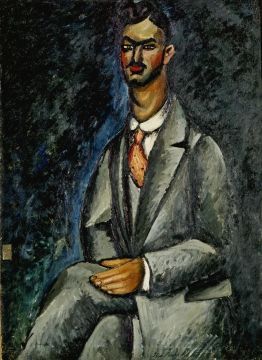
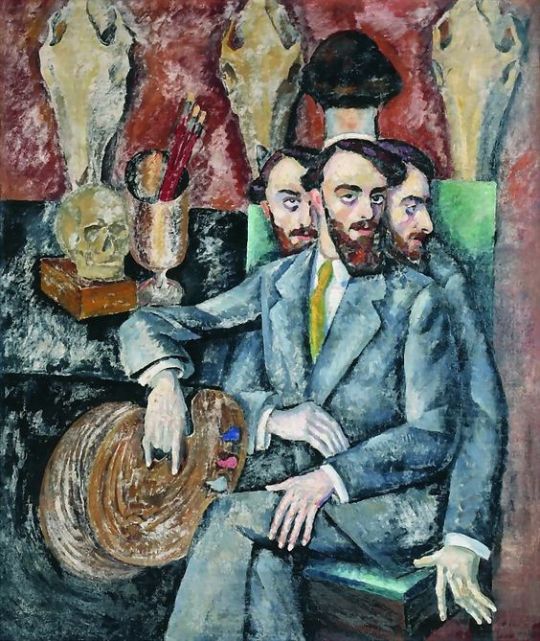
Portrait of a Boy in an Embroidered Shirt (1909) - Portrait of a poet (1910) - Portrait of the Artist A. Milman (1917), by Ilia Machkov.
0 notes